Immigration Reforms Announced in Australia: Quantity Control, Increased Requirements, and Strict Scr
Introduction
In the wake of the Labor Party's generous visa issuance at the end of the previous fiscal year to fill labor market gaps, Australia is now witnessing a significant shift in its immigration policies. The once lenient approach has proven unsustainable, leading the government to announce substantial reforms aimed at making immigration to Australia more challenging.
#01:
Government Limits Immigration and Unveils New Policies Lowering Immigration Levels.
According to various recent reports, there is a clear trend in federal government reform regarding immigration policies, specifically aimed at curbing the number of temporary immigrants residing in Australia.
The federal government has unveiled a series of policies. Notably, international students are at the forefront of these reductions. The minimum English language requirements for international students will increase, and additional restrictions will be implemented to prevent visa-hopping by students already in the country.
In addition to limiting international student and graduate visas, the government will introduce a new temporary "Skill Demand" visa to attract high-skilled workers capable of enhancing Australia's labor force skills and expertise.
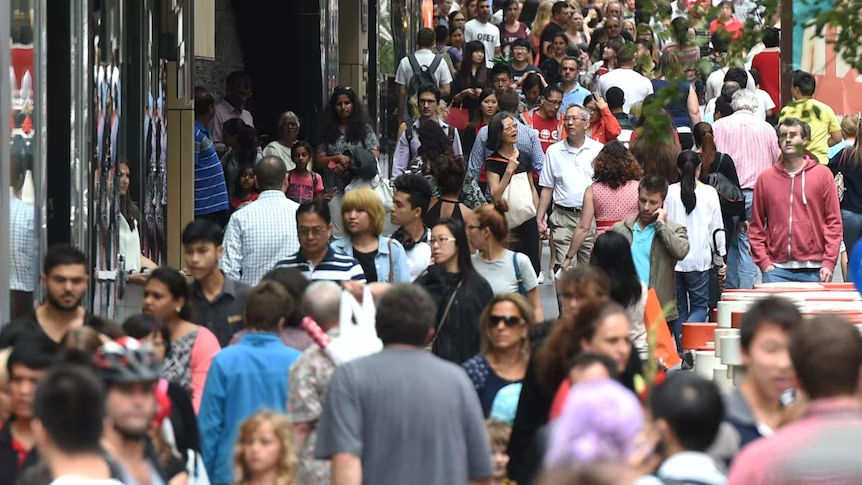
图片来源:ABC News
The federal government has just announced the long-awaited immigration strategy, a comprehensive 100-page document detailing current and future measures to thoroughly reform Australia's "fragmented" immigration system.
The plan includes 25 new commitments for immigrants to serve the country, following a review by Dr. Martin Parkinson, who found that Australia's immigration program "did not align with its purpose."
The government also revealed that Australia's net immigration levels reportedly peaked at 510,000 people in the last fiscal year. The new policy aims to bring immigration down to more normalized levels: 375,000 people next year and further down to 250,000 people by 2025.
The Labor Party has stated that without this new policy, immigration numbers would remain at a higher level for a more extended period, expected to reach 440,000 people next year and 305,000 people the following year.
Minister Clare Ellen O'Neil stated that the immigration system reforms announced and implemented earlier this year have already placed "downward pressure" on net immigration.
“
"We inherited a hopeless immigration system from the Coalition party, and we have been working tirelessly to achieve the best balance for Australia's immigration system.
”
If we maintain the settings we inherited from the Coalition party, we wouldn't expect to see the same decline in immigration levels in this fiscal year and the next fiscal year.
The immigration strategy aims to make immigrants work for the country, including easing labor shortages that hinder our country's development through appropriate settings without putting unnecessary pressure on other parts of our economy."
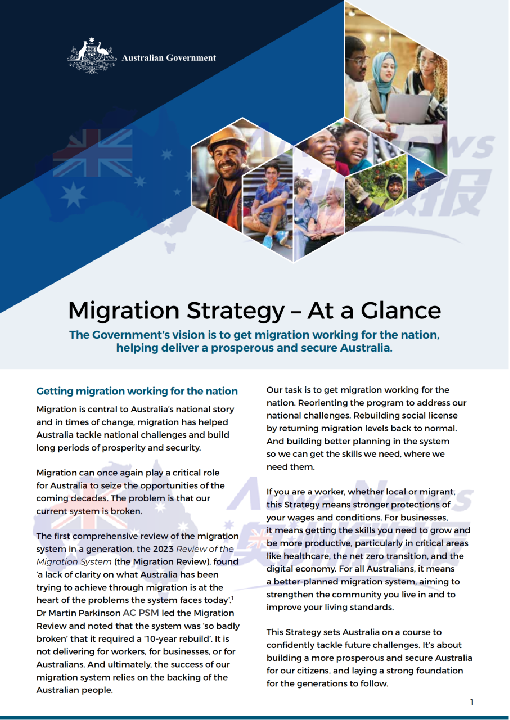
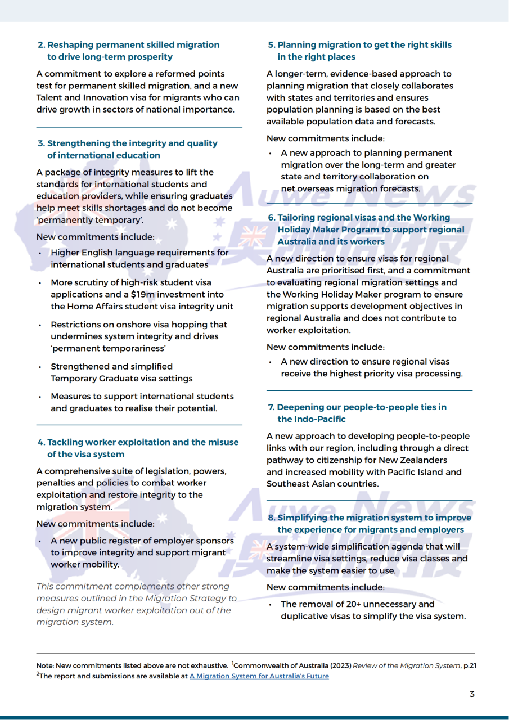
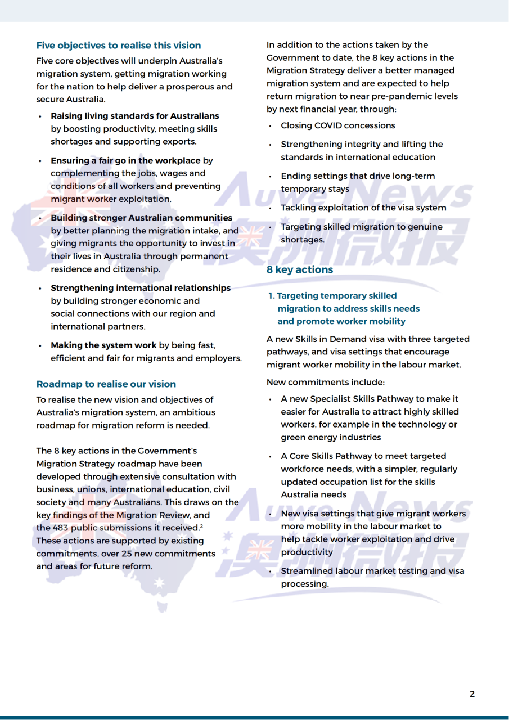 So what exactly will be done?
So what exactly will be done?
#02:
Tightened Language Requirements and Restrictions for Students
Firstly, regarding the new policy targeted at international students, the new strategy includes several measures aimed at international education. The government states that these measures will ensure that foreign graduates contribute to addressing skill shortages.
Starting from early next year, the English language requirements for student and temporary graduate visas will be raised to "enhance the quality of education for students in Australia and reduce potential labor exploitation."
Subclass 485 Graduate Visa
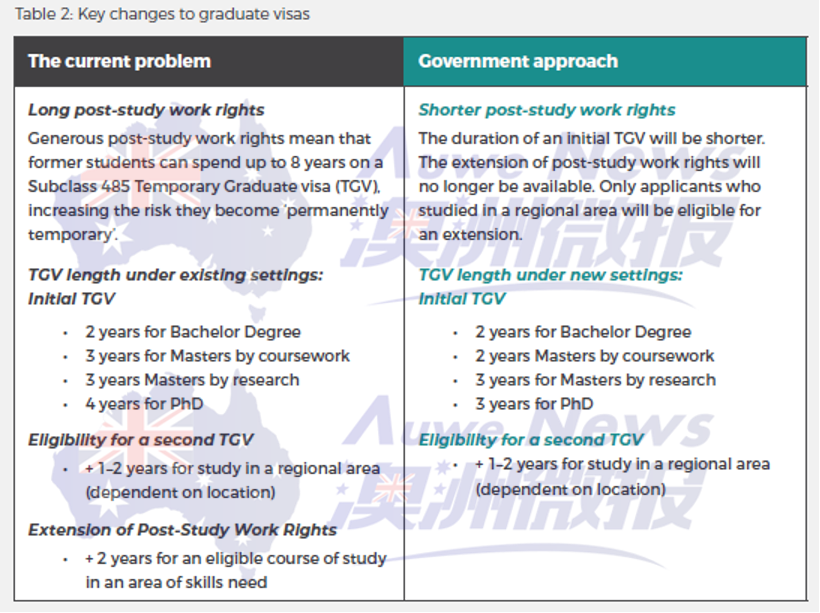

There are plans to systematically reduce the duration of the 485 visa to prevent the transition from a 485 visa to a student visa, aiming to prevent Australian graduates without skills from staying in the country. The age requirement is set to be lowered to 35 years from the current 50 years, and the English language requirement for the Subclass 485 will be increased to 6.5 from the current 6.
“genuine student test”.
The changes to student visas will be significant, with no set quota but other methods to control the numbers:
Ÿ Increasing the English language requirement from 5.5 to 6.
Ÿ Reducing VET (Vocational Education and Training) courses, primarily retaining higher education courses.
Ÿ Preventing changes in majors.
Ÿ Raising the visa financial requirements and implementing the "genuine student test."
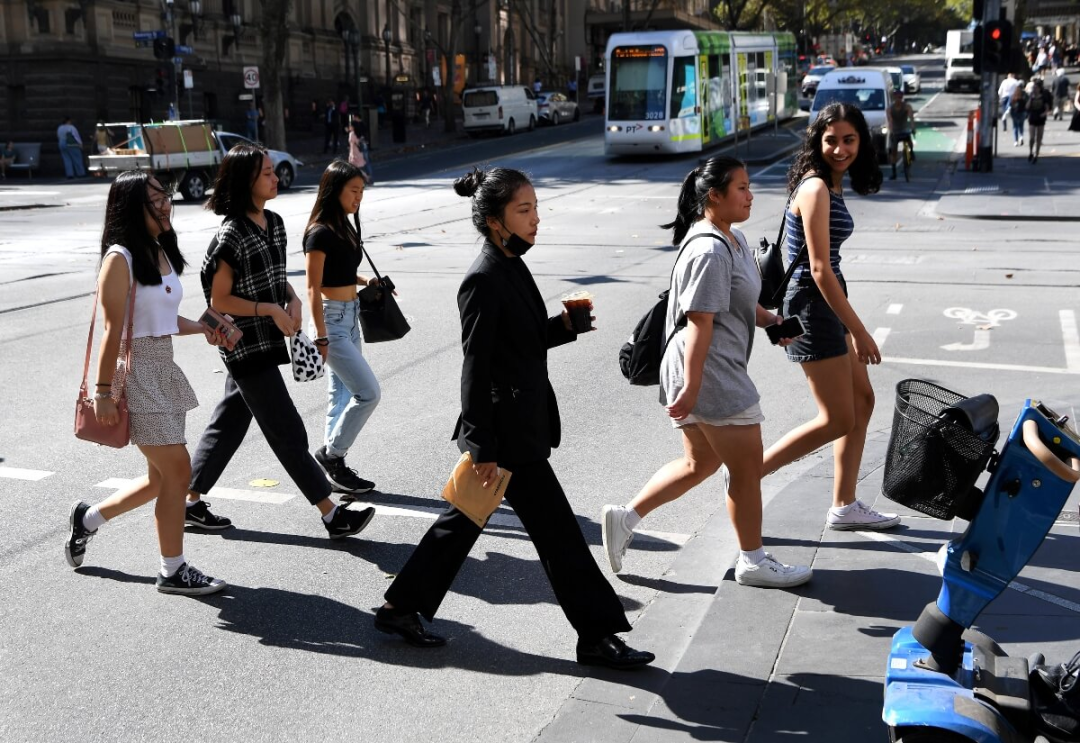
图片来源:Student International
According to the International English Language Testing System (IELTS), the language requirement for international graduates applying for the Subclass 485 visa will be raised from 6.0 to 6.5. For student visa applicants, the language requirement will increase from 5.5 to 6.0.
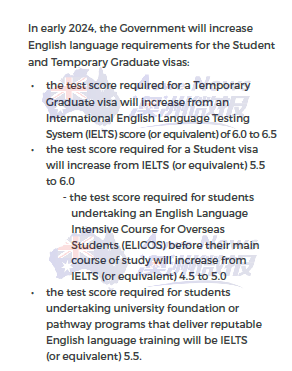
图片来源:Student International
The government has stated that international students and graduates constitute the largest proportion of "permanently temporary" immigrants, with 108,000 people having stayed in Australia for 5 years or longer.
Under the new plan, those applying for a second visa will face more stringent scrutiny. Last year, the number of international students who stayed in Australia on consecutive multiple student visas grew by over 30%, reaching 150,000.
”
These extended student visas rarely contribute to career development but are often used by students to remain in Australia, rather than meeting the requirements for permanent residency or other skilled visas.
In addition, a new "genuine student test" (GST) will be introduced to replace the current Genuine Temporary Entrant (GTE) requirement. This test will be applicable to all levels of student visa applicants, essentially requiring them to undergo an exam or even an interview.
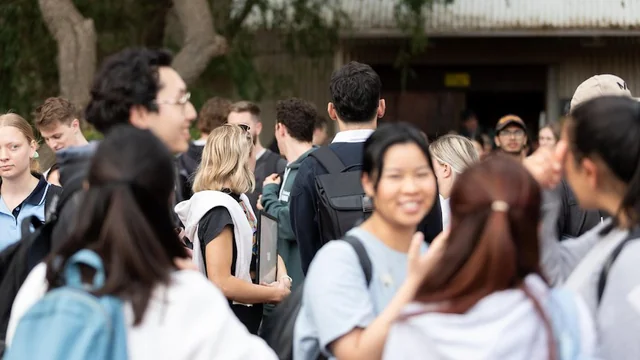
图片来源:Reddit
The report also outlines some concerns that unreliable private vocational education and training institutions are aiding "non-genuine students" in entering Australia's labor market by using student visas.
The document points out that if growth is driven by dishonest students and unethical providers, it could threaten the integrity and reputation of Australia's international education.
“
To address this issue, the government will introduce a new "genuine student test" for all international students, indicating that "the vast majority of international students in Australia will return to their home countries."
”
The genuine student test will evidently encourage genuine students to apply and deter non-genuine students whose primary intention is work rather than study from entering Australia's international education system.
Student visa applications will also be prioritized based on the "provider's risk level," with those deemed higher risk undergoing slower processing times.
As over 50% of graduate visa holders are working well below their skill levels, the government will take measures to adjust the work rights and eligibility duration for such visas. Temporary graduate visa holders will be restricted from transitioning back to student visas while onshore.
#03:
Introducing a New High-End Skill Visa
Average Processing Time Only 7 Days
In addition, the Australian government is planning a new high-end skill visa.
To facilitate the entry of more highly skilled immigrants into Australia, the government will establish a new "Specialist Skills Pathway" to assist businesses in recruiting individuals with specialized and unique skills.
图片来源:IPA
Apart from trade workers, machine operators, drivers, and laborers, this new "Specialist Skills Pathway" is open to eligible applicants in any occupation with an income of at least AUD 135,000.
The government believes that this new pathway will contribute an additional AUD 3.4 billion to the budget bottom line over the next 10 years.
“
"Highly skilled immigrants bring significant economic benefits as they are more likely to bring knowledge and ideas that enhance productivity, create employment opportunities for locals, and generate substantial fiscal returns through taxation."
”
They help meet the workforce needs at the individual company and assist companies in acquiring specialized knowledge, niche technologies, or research expertise that Australia cannot obtain locally, as well as skill sets not included in the occupational definitions.
The government anticipates around 3,000 individuals coming to Australia annually through this pathway and pledges an average visa processing time of 7 days.
If we do not offer competitive visas and compete more effectively in the global talent competition, these immigrants will become primary candidates for other countries.
This strategy also includes some immigration policies announced earlier this year by the government, such as the cancellation of pandemic visas introduced during the peak of the COVID-19 pandemic, and the return of restrictions on the maximum number of hours international students can work every two weeks.
Starting from July 2023, the income threshold for the Temporary Skilled Migration Income Threshold (TSMIT), primarily used for employer-sponsored visas, has been raised from AUD 53,900 to AUD 70,000.
#04:
More Visa Requirement Adjustments,
Large Numbers of Chinese Individuals Will Be Affected
In the latest documents, adjustments to several visas, many of which are heavily applied for by Chinese nationals, have been mentioned.
A new employer-sponsored visa system will replace the current Subclass 482 visa. It includes:
Ÿ Essential Skills Visa: Applicable for applicants earning below $70,000 annually
Ÿ Core Skills Visa: Applicable for applicants earning between $70,000 to $135,000 annually
Ÿ Specialist Skills Visa: Applicable for applicants earning above $135,000 annually
The Specialist Skills Visa will no longer have an occupational list, and visa processing will be prioritized, reducing the processing time to 7 days. Trade occupations will be excluded. There will be an annual quota of 3,000 visas.
The Core Skills Visa is expected to have the highest number of applicants. There will be a new "Skills in Demand List," which is a revised occupational list.
Details for the Essential Skills Visa have not been finalized. This visa will involve union oversight, have quotas, and be limited to specific industries such as aged care.
The maximum validity period for the visa is 4 years, making it easier for visa holders to change employers and providing a clear pathway to permanent residency. The Temporary Skilled Migration Income Threshold (TSMIT) will be updated annually.
Under the employer-sponsored visa, the Skilling Australians Fund (SAF) levy will be collected quarterly or monthly instead of a lump sum.
The Labour Market Testing (LMT) process will be streamlined, eliminating the advertising requirements through Workforce Australia. The validity period will be extended to 6 months.
Skilled Migration Points System
The current points-based system will undergo a reevaluation, and a new scoring system will be introduced. This pathway will offer a faster route to Permanent Residency (PR) for international students who have worked in Australia.
Regional Migration
The government acknowledges that the current strategy for immigration in remote areas has failed. In the future, there will be closer collaboration with each state to better meet the population needs in regional areas.
Global Talent Visa and Investor Immigration
There will be a heightened focus on a select few immigrants capable of making significant contributions to Australia, with consideration given to new talent and innovation visas.
Investor immigration may also undergo adjustments, as currently, 80% of investor immigrants concentrate their businesses in small-scale retail and hotel industries rather than sectors that truly drive future innovation and productivity development in Australia. It appears that the 188C visa will continue to be implemented but with modifications.
In conclusion
The current outlook from the Australian government is very clear: there will be a restriction on immigration numbers, especially temporary immigrants. Only immigrants who genuinely contribute to Australia will be accepted. Therefore, future policies will continue to tighten, immigration requirements will become more stringent, and there will be stricter regulation for previously abused visas.








